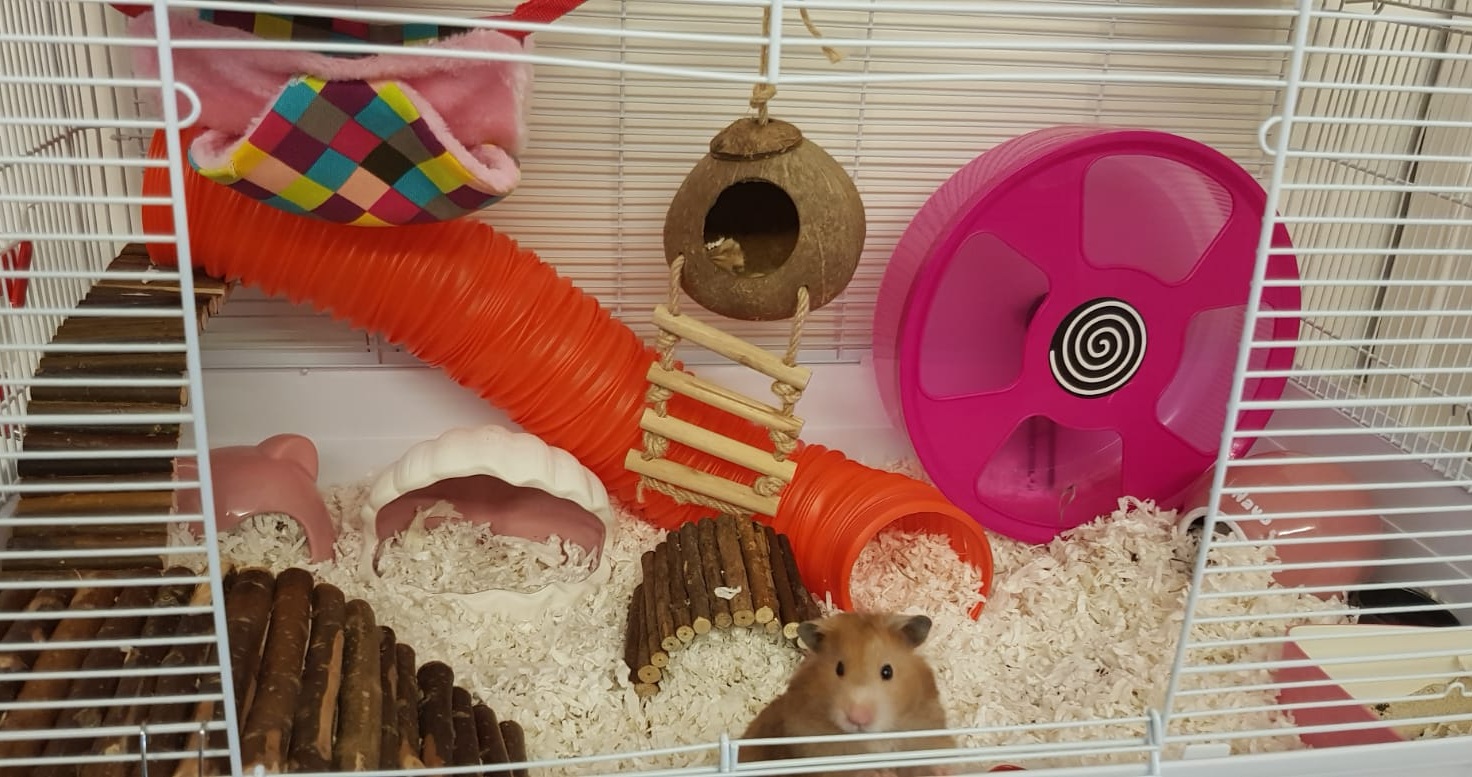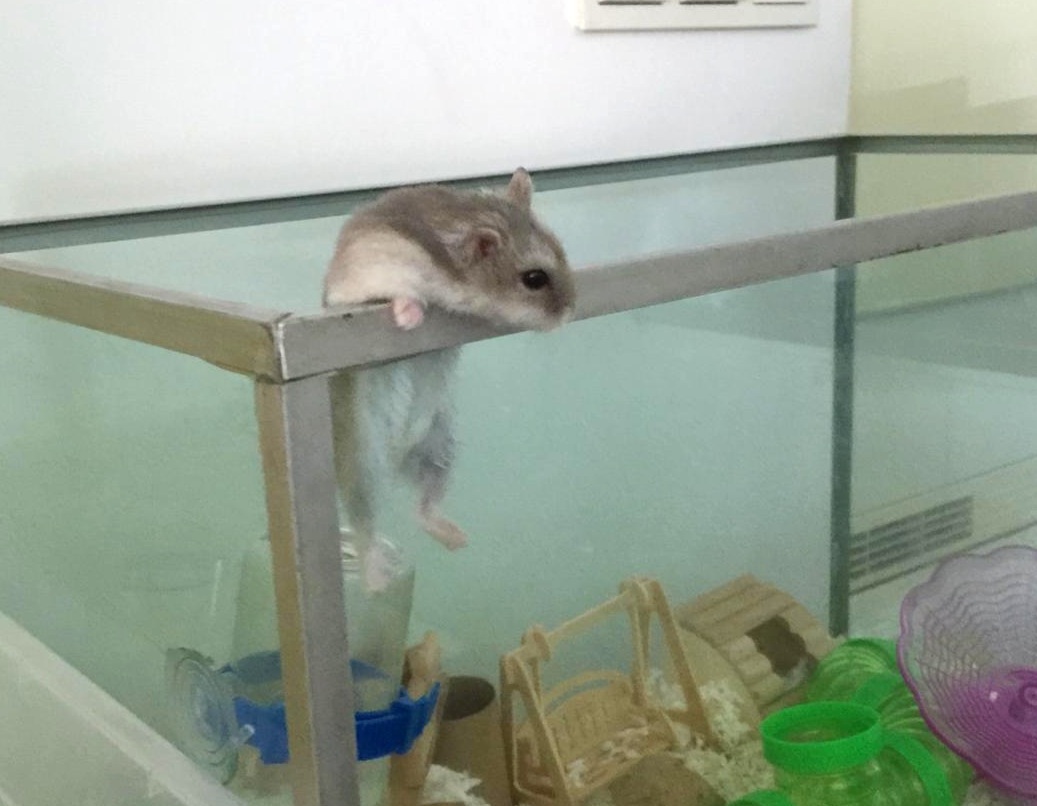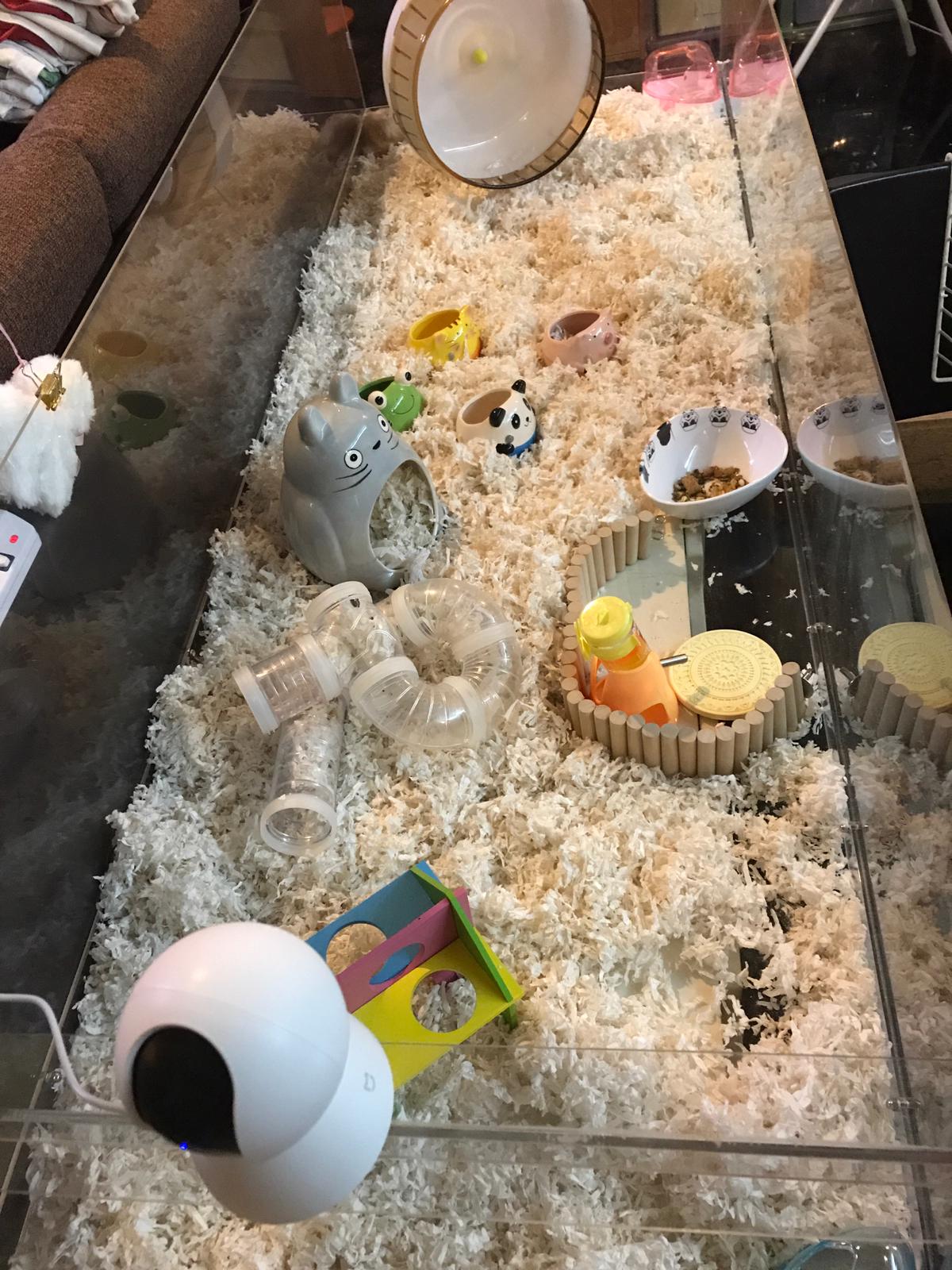Contributed by: Secolastika Poh
Hooray! You’ve decided that you’ve got what it takes to care for your furbaby for life, and now you will be making a big decision as pawrents: choosing your hamster’s home sweet home. There are many points of consideration before you make your purchase. After all, no one wants to live in a home that looks wonderful from the outside but is terribly uncomfortable on the inside.
Cages come in all shapes and sizes
A large cage can contain lots of enrichment and will lead to a happy, healthy hamster
Choosing the Right Cage
Contrary to popular belief, hamsters require more space than one would assume. Dwarf Hamsters requires a minimum of 2,800 sq cm and Syrian Hamsters require 4,000 sq cm of unbroken floor space, and that is the bare minimum only! Why is unbroken floor space so important? Uninterrupted, continuous floors space ensures your hamster has enough room to run around freely. Unfortunately, while aesthetically pleasing and space-saving, multiple levels and connections via tunnels/tubes do not provide your hamster with the minimum area it needs to truly stretch its limbs. Hence, it is vital to pick a cage that has a wide and long enough base for your hamster to feel comfortable and ‘at home’.
Another two very important but often overlooked points that are a cage should be escape-proof; and easy to clean. To make the right decision, we recommend purchasing cages from better brand companies, reading up in online forums and talking to other local hamster-savvy owners. Do note that while they may be animal lovers, sales store staff are often not trained on proper hamster or rodent care. Hence, they tend to give poor guidance either due to lack of knowledge and experience or because pushing higher revenue sales is their foremost agenda.
Ensure your cage is escape-proof
Syrian hamsters are master escape artists but don’t underestimate the smaller species of hamsters! !
Singapore is blessed with plenty of well-stocked pet shops that offer hamster cages in a myriad of makes, shapes and sizes. Regrettably, despite the large variety of designs available, most of the cages do not provide the minimum floor space required for your hamster to thrive. Sadly, that is how many well-meaning pet owners, especially first-time pawrents, end up purchasing substandard homes for their hamsters.
HSS recommends a cage that is 90x50x50cm or larger for any hamster.
A simple rule of thumb when it comes to cage size: You can never have too much space! So, go ahead and provide a larger cage for your hamster if you have the resources to do so. If you feel like splurging, be sure to check out all of the amazing, custom-made cages available online. Carousell is a good place to start, and features beautiful and spacious cages made of wood, acrylic, metal and even glass.
Get creative on your cages
Pictured here is an Ikea Detolf shelf, that is split to house two winter white hamsters separately.
Why Size Matters
Peace of Mind and a Longer, Healthier Life
Hamsters kept in cages with adequate amounts of space have been shown to be significantly healthier, physically and mentally, than hamsters kept in cages that do not meet HSS cage size recommendations. Just as with humans, being squeezed into a tiny physical space causes tremendous psychological stress, and your hamsters may even develop a psychological disorder called “Cage Aggression”. This disorder causes your hamster to become aggressive, anxious and highly protective of its environment. In this fearful and panicked state, your hamster may even lash out and attack anything that gets too close to it, including your hands and fingers. Even if your hamster is lucky enough not to develop such symptoms, there is plenty of empirical evidence that definitively links cage size to hamsters’ well-being and lifespans. In other words, the larger the cage, the happier and healthier the hamster.
When it comes to cage sizes, the bigger the better!
Small cages can lead to Cage Aggression
Healthy Teeth and Cute Smiles - Bar Biting
We all have a friend or two who have a bad habit of biting their nails when they are upset about something. In hamsters, such behaviour is termed bar biting or bar chewing and has more dire consequences than simply ugly fingernails. This is because hamsters gnaw on the bars of their cages, which are much harder than any human fingernail. As a result, hamsters can end up chewing to the point of developing fur loss around the snout, and even developing damaged and misaligned teeth. Although gnawing is perfectly normal hamster behaviour and helps them to keep their teeth at a healthy length (like us filing our nails now and then), bar biting is a sign of intense psychological stress and should definitely be handled as the serious health issue that it is. For an interesting discussion on the case of "stereotypy" (a repetitive behaviour that serves no purpose) in hamsters, please refer to this study by Fischer et al. 2007.
Syrian hamsters require more space and a larger wheel
If your hamster continues to bar-bite despite an increased cage size, consider getting a tank or acrylic cage. Just ensure the cage is escape-proof (with a lid!) and has good ventilation!
More Space Means More Enrichment
Larger cages mean having more options for hamster wheels, hideouts, tunnels and toys! Why choose between a big wheel and a bunch of cool toys when you can have both and more in a properly sized cage? The more area your cage has, the more fun to be had for both your hamster and you.
A large cage will also offer more enrichment for your hamster
More tunnels, different substrates, hideouts and levels can be added to a larger cage!
More Space Means More Room for Exploring
Do you know that hamsters in the wild burrow to depths of up to 0.7m? Hamsters are phenomenal little burrowers, and will need bedding of at least 15cm (6”) depth to burrow to their hearts’ content. To find out more about what kind of bedding your hamster will love you for, be sure to take a look at our safe bedding article.
More Space Means Less Cleaning
No one likes to perform potty duty. However, with a larger cage and sufficiently deep bedding, you can get away with just daily spot cleaning, and a deep clean every four to six weeks. What is deep cleaning? A deep clean entails: 1. removing everything inside the cage, 2. throwing away all the soiled bedding, and 3. giving everything a thorough and clean wash. On the other hand, spot cleaning is simply picking out the soiled bedding pieces from your hamster’s cage. Essentially, an adequately large cage is more pleasant and comfortable for hamsters and pawrents alike!
#TLDR
As large as possible
Minimum cage size -
Syrian Hamster: at least 80cm x 50cm
Dwarf Hamster (Roborovski/Campbell/Winter white): at least 70cm x 40cm
Larger cages =
Happier and less stressed hamsters that are easier to tame and bond with
Healthier hamsters that look better and live longer
More options for correctly-sized hamster wheels, hideouts, toys , and themed cage set ups
Time and cost savings for pawrents with reduced cage cleaning frequency
References
The effect of cage size and enrichment on core temperature and febrile response of the golden hamster (https://journals.sagepub.com/doi/pdf/10.1258/002367799780578246)
Behaviour of golden hamsters (Mesocricetus auratus) kept in four different cage sizes (http://pdfs.semanticscholar.org/3891/ee836d1c5fd8479e67ae51c6069167f0f78e.pdf)
SPCA Singapore - What Sort Of Cage Does My Hamster Need? (http://www.spca.org.sg/petcare_details.asp?id=911)
Danni Davis - Which cage size is best? (https://www.facebook.com/notes/hamsters/which-cage-size-is-best/873004222775254/)
Danni Davis - Problems with Small Cages (https://www.facebook.com/notes/hamsters/problems-with-small-cages/844354662306877/)
More in this series :








